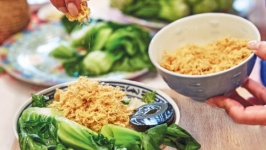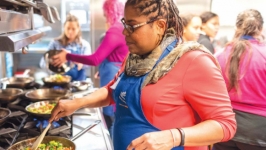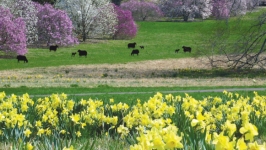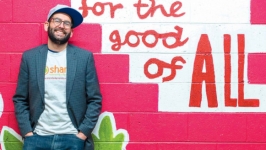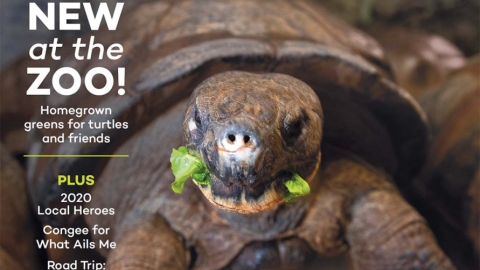A New Farm at the Philadelphia Zoo
“When we think about the importance of growing food sustainably, that is going to be the future that will benefit both humans and wildlife alike.”
MOMMY, THE 100-YEAR-OLD GALAPAGOS TORTOISE, loves the stir-fry mix. So do the hippos and great apes, including the gorillas, orangutans and gibbons. But not the emus. The finicky flightless birds make it abundantly clear they detest the leafy lettuce, spitting it out the moment it touches their tongues. Probably, Kristen Waldron theorizes, because the mix contains mustard greens with a slightly spicy kick.
Waldron is the director of strategic initiatives at the Philadelphia Zoo, and she recently developed a new program for the 146-year-old organization. Inside a white, 40-foot repurposed steel shipping container plunked down in the park’s Urban Green section, past the penguins and the Primate Reserve, a vertical farm grows lettuce—about 7,000 plants in the eight months since zoo staff planted the seeds. With more than 1,300 animals, which collectively run up a roughly half-million-dollar grocery bill each year, the zoo’s sustainable method of farming could be a game changer, and, if the director’s plan continues to take shape, the whole city could reap the benefits.
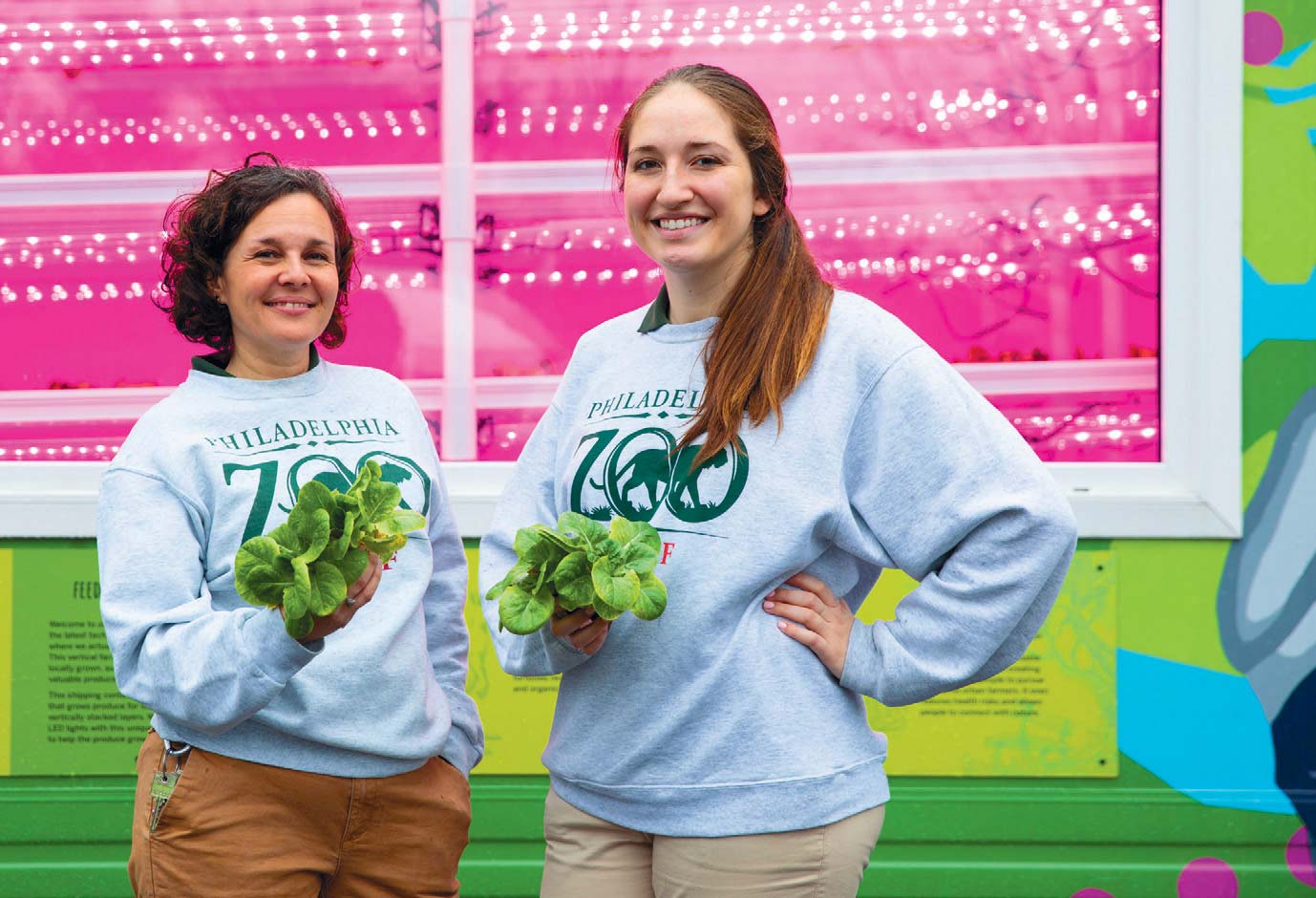
Kristen Lewis Waldron, director of strategic initiatives, and Alicia Halpin- Ortiz, community engagement educator, pluck fresh greens from the zoo’s crop box.
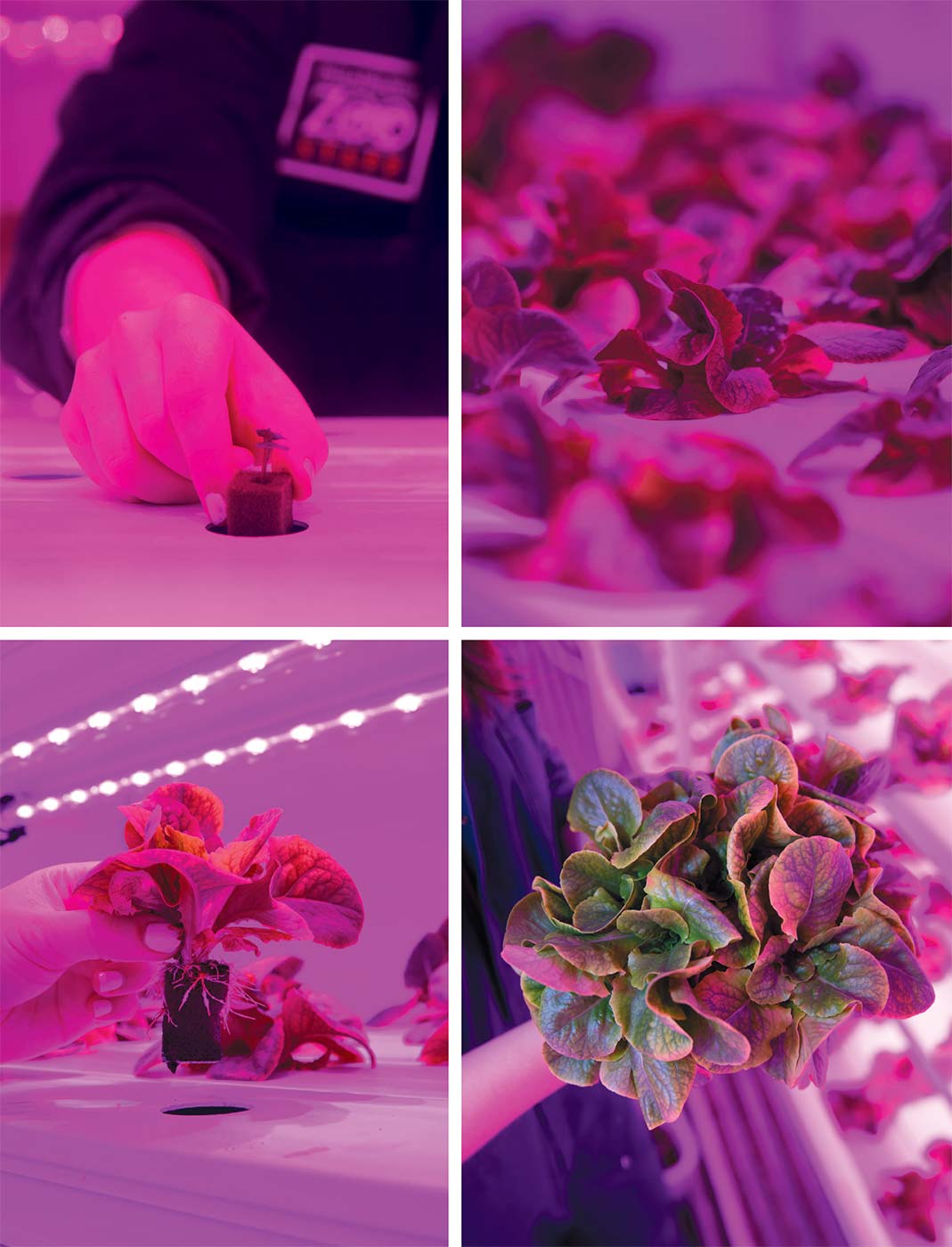
After studying animal science and wildlife conservation at the University of Delaware, Waldron started her career at the Philadelphia Zoo 23 years ago coincidentally, as a nutrition intern. In the following two decades, she ran the zoo’s education department before starting her current position in 2016. Her idea for the mini farm took root during a series of community stakeholder meetings that the organization held as part of its planning, bringing together Zoo leadership, including president and CEO Vikram H. Dewan, and representatives from about 20 different local organizations in the surrounding neighborhoods. “The urban gardening concept really came to life in those conversations— it was the number one thing that our neighborhoods talked about—what is the zoo’s role, and what kind of impact can we have?” Waldron says. “That’s where the vertical farm was born.”
The five neighborhoods surrounding the zoo are Brewerytown, Fairmount, Parkside, Mantua and Belmont. Pockets of the area have faced challenges with consistent access to fresh produce, resulting in some food deserts. At one of the meetings with neighborhood leaders, Waldron heard from a woman who has lived in Mantua for 88 years, who relayed how important gardening was in her life, from the time she was a child.
“That can be a great gateway to connecting with nature,” Waldron says. “When we think about the importance of growing food sustainably, that is going to be the future that will benefit both humans and wildlife alike.”
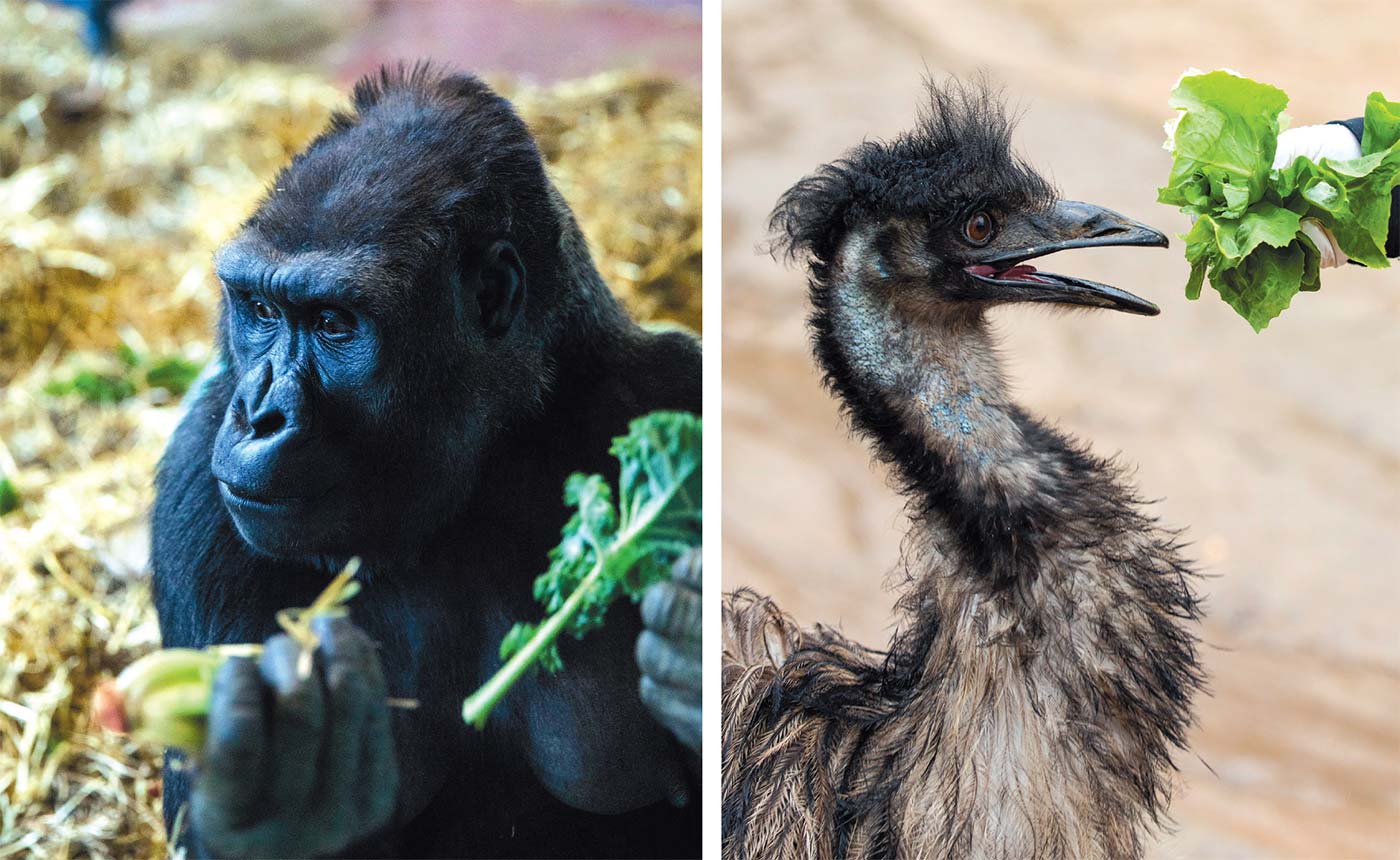
Gorillas and emus are two of the zoo’s animals that enjoy fresh greens grown on the property.
LEADING THE WAY
The Philadelphia Zoo was chartered in 1859 and opened in 1874. This isn’t the first time in those years that America’s first zoo has been an innovator. In 2011, the organization launched Tree Top Trail as part of Zoo360, another pilot program in which primates could move more freely around the zoo via overhead walkways just for them. In the years since the campus-wide system launched, tigers became part of the roaming program, and the team hopes to soon include the bears. From an animal welfare perspective, Zoo360 is significant. Waldron says that a researcher spent three years conducting a study on, in layman’s terms, “animal happiness,” and the new set-up is a success. It’s been so successful, in fact, that the Zoo360 playbook has been adopted by 30 zoos around the country and around the world. Waldron is proud of the impact it’s had. “I feel like that’s just one of the many ways that our zoo is changing zoos for the future”
Now, she thinks the new vertical farming program could make an equally significant impact. After the community meetings, Waldron and colleague Doug Bohr (who has since moved on from the Philadelphia Zoo) thought through what urban farming would look like at the Philadelphia Zoo. They secured a grant and partnered with an organization that repurposes shipping containers for growing plants.
Waldron grew up participating in 4H and worked on farms in her home state of Maryland, but the hydroponic growing system is something altogether different. Her husband is the director of sustainability for New Jersey’s Camden County, which uses a hydroponic system to grow produce for community partners. “I was able to phone a friend,” she jokes. Although the zoo’s hydroponic growing system can automate nutrient dosages, water, and LED light, Waldron opted to learn manually so she and her team could first understand exactly how it worked. Now, she can control it all with an app on her phone.
Inside the narrow shipping container, often called a crop box, neon pink light bathes neat rows of tiny, budding greens. Visitors entering the enclosed farm must don thick, black sunglasses to protect their eyes from the LED lights. Seeds are started in the plant nursery section of the box, germinating in a soft foam tray before the fragile green wisps are transported to tiny pockets called channels that, instead of soil, are filled with nutrient-infused water. The four levels of plants on each side of the box are cultivated in quadrants so the team can harvest each week—more than 7,000 plants to date, providing herbicide- and pesticide-free produce for 25-plus species across the zoo campus, including gorillas, orangutans, gibbons, lemurs, tortoises, hippos and, yes, emus.
Some of the zoo’s animals, like hippos, are vegetarian, so these hyper-local leafy greens make up the majority of their diet. The team started with the stir-fry mix because it contains fast-growing plants that allow them to learn more through experience and trial and error, but after 15 generations of plants (each one taking less than 30 days to grow to maturity), they’re moving on to test out another variety. Bibb lettuce will take a little longer to grow—about 60 days. But with a mild flavor and snappy crunch, it may be a little more palatable for the emus.
By design, the hydroponic system is highly sustainable, using 70 to 90% less water than a traditional farming infrastructure. It also aligns with the goal of reducing the zoo’s carbon footprint, since food grown on site doesn’t have to be transported. It’s not lost on Waldron that the animal’s access to fresh food is, in some cases, infinitely better than for people in the surrounding neighborhoods, which is why the pilot program was designed with the community in mind, too.
“We felt like [the crop box program] was a win-win, not only from an animal welfare perspective on site, and a guest experience opportunity, but it’s also a way for us to think about the impact that we can have in our neighborhoods as we launched this further into our community as a long-term plan,” she says.
Eight months into the crop box pilot program, the zoo is thinking about how it can grow. The team is meeting with potential neighborhood partners with the goal of scaling up the pilot program, and Waldron envisions crop boxes filling a vacant warehouse in one of the five surrounding neighborhoods. (She estimates six or eight boxes would be needed to grow enough food for the zoo’s animals.) The idea would be that this partner would launch and oversee a small business enterprise, creating an entrepreneurial opportunity for someone in the neighborhood, as well as green jobs for the community. The zoo would be a guaranteed buyer of the produce, ensuring that both the gorillas and hippos have their fill of leafy greens, and the surrounding community would have access as well.
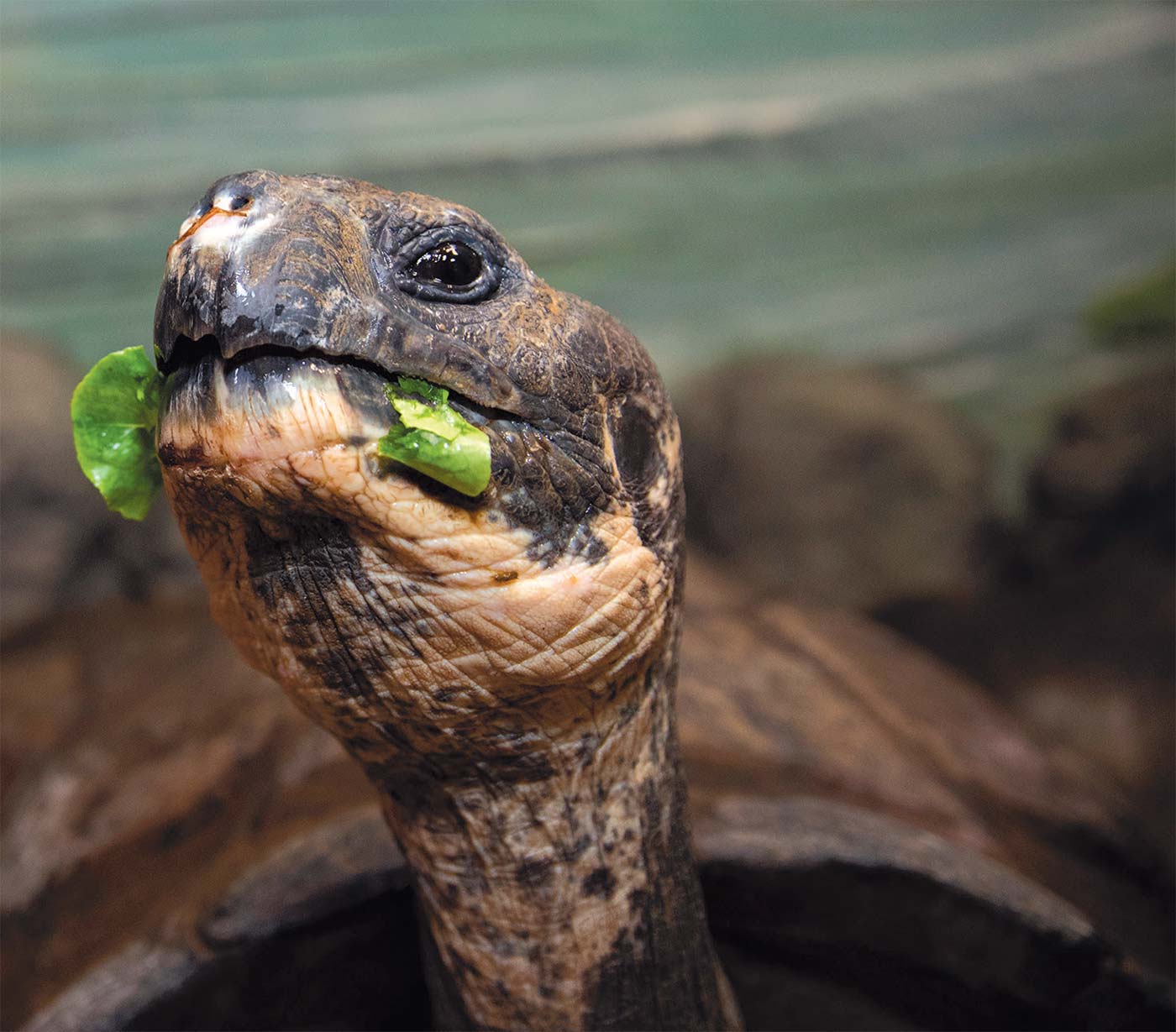
A tortoise has some salad for lunch.
THE GROWTH MINDSET
Inside the zoo, the animals’ appetites come first, but if the program scales to the size Waldron hopes, it may eventually provide leafy green salads for on-site food trucks like Root to Leaf, too. The farm is also integrated into zoo programming, adding fun to the guest experience through hands-on activities and education. Excess water from the hydroponic system gets used to water the native plants growing around the shipping container, for example, and visiting kids are often asked to help with the task. They also recently launched a new activity in which kids create a lettuce cup in a recyclable paper cone. After selecting their greens, the mini zookeepers walk their cones over to feed the chickens and ducks.
“Harnessing visitors’ enthusiasm and engagement can inspire them to care more about not only animals, but the environment and the health and sustainability of both,” Waldon says. “We have a theory of change: If we can build empathy and create that emotional connection with these animals, it will prime people to take action [to be more sustainably minded in their own lives and communities]. We call it ‘doing leads to caring.’”
Last August, the zoo hosted the Association of Zoo Horticulture conference, bringing together organizations from across the country. Since showcasing the new vertical farm, Waldron has fielded calls and requests from executive directors of other zoos, including Woodland Park Zoo in Seattle and Sedgwick County Zoo in Wichita, Kansas—indicating the program has the potential to spread just like its pioneering Zoo360 initiative.
At the start of the new decade, the Philadelphia Zoo is primed to continue innovating with conservation in mind, both globally and in its own backyard. “We want to pivot and adapt and grow with projects like this, and make sure that we’re really learning along the way,” Waldon says.
On the walk from the crop box to the zoo’s exit, Waldon and I witness the emus dashing happily around their enclosure. In less than 60 days, they’ll be taste-testing the Bibb lettuce.



